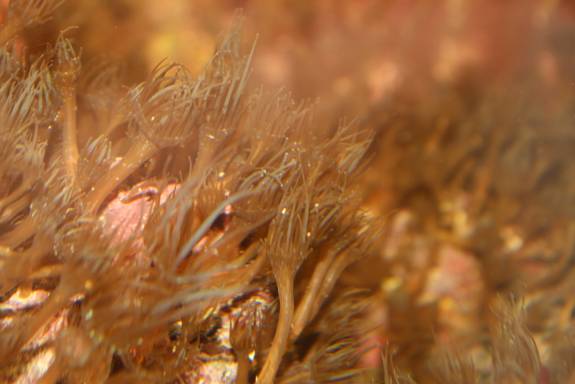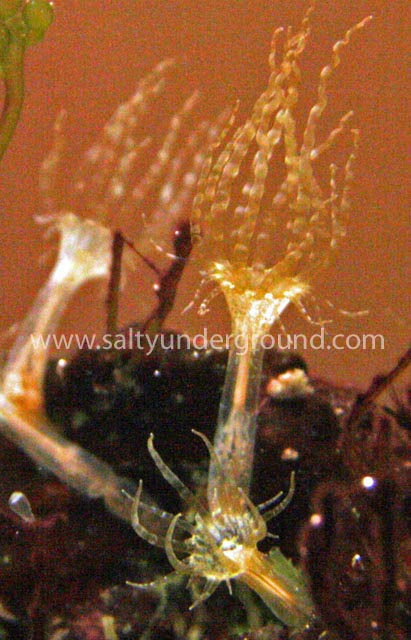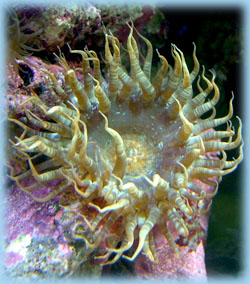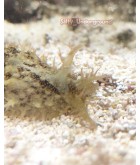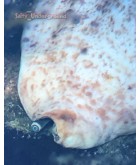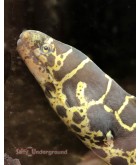If the photos below look familiar, you may have Aiptasia anemones in your saltwater aquarium. Aiptasia anemones will crowd out and sting your corals preventing them from growing in a healthy manner.
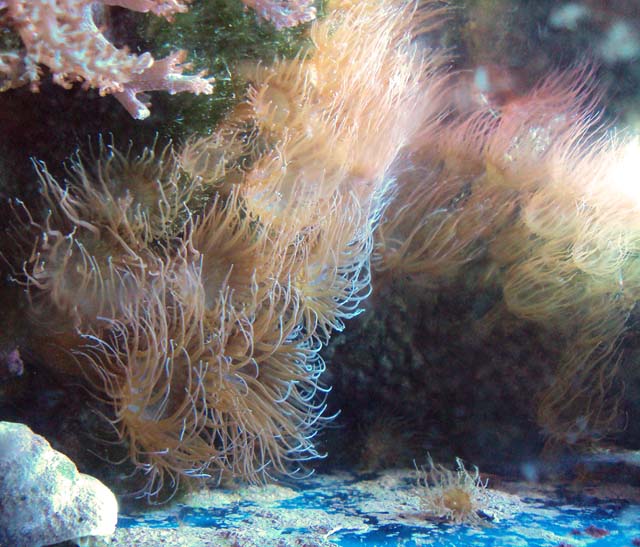
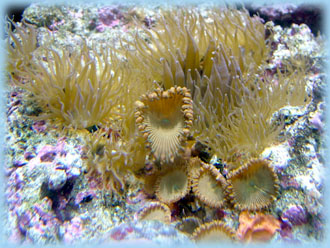
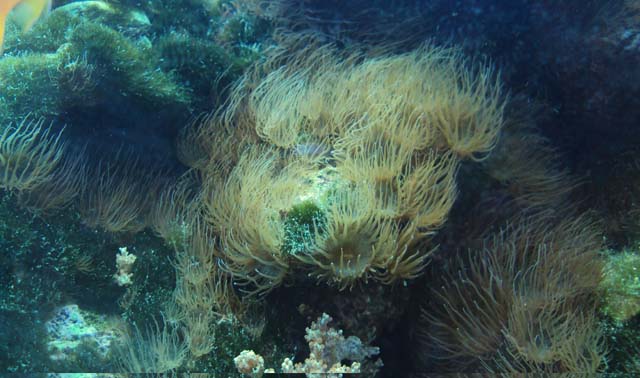
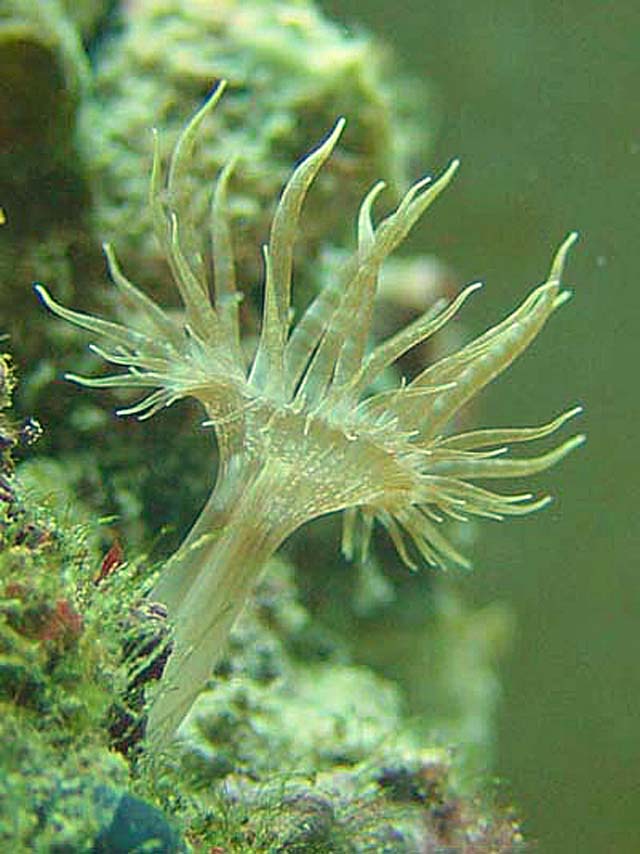
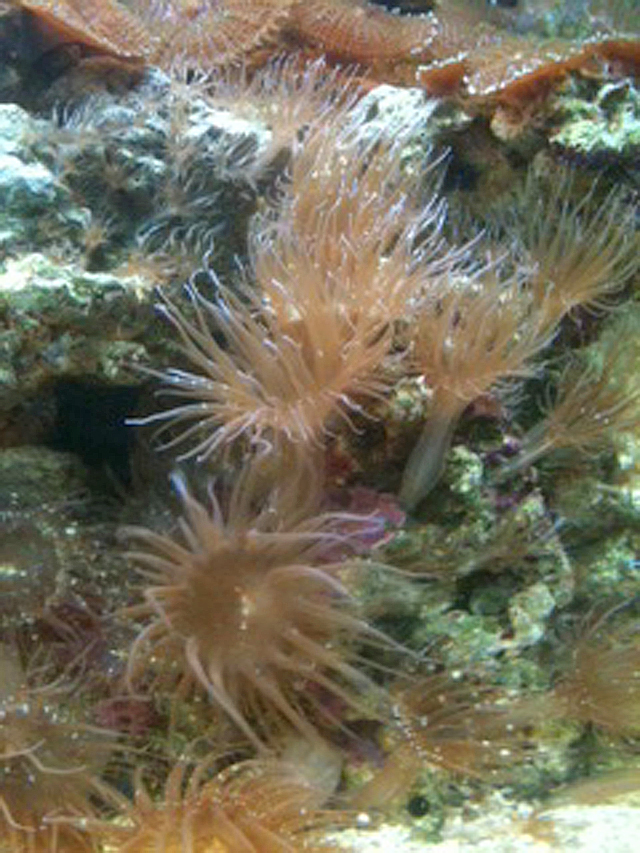
Many aquarists consider Aiptasia to be the dandelion of the ocean. Just like our weeds in our yards, they grow quickly, and will come back if you don't remove the entire organism. If even a portion of the pedal disc (foot that attaches to the substrate) or tentacles remain, it can regenerate a new polyp. Sloppy aiptasia anemone removal can easily turn one aiptasia polyp into hundreds in a short time. Like the mythic Greek hydra, when you remove one head, two grow in its place!
Seen to the right is an Aiptasia attached to the glass front of an aquarium. This is the pedal disc-or foot-of the Aiptasia anemone. Surrounding the main pedal disc are its polyp buds. This Aiptasia's foot has lacerated, or budded, asexually to produce daughter polyps.
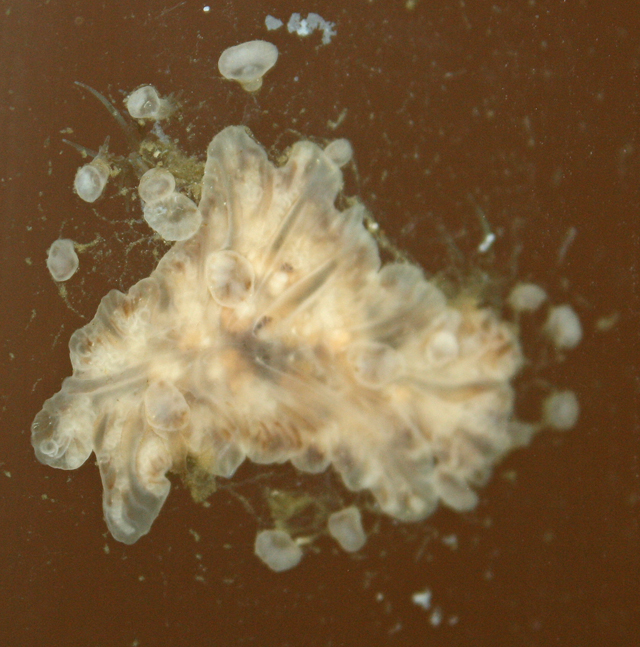
If the aiptasia anemone is repeatedly irritated (say, by consistently removing the head-or oral disc), it will asexually reproduce at an alarming rate. Some saltwater hobbyists attempt to remove their Aiptasia manually, but it can result in a population explosion. What is even worse, these aiptasia anemones can "walk" or "swim" away. They will detach their pedal disc and launch themselves into the water, pulsing their bodies like a jellyfish, until they have found a better, more protected area of your aquarium. They can also detach and reattach their pedal disc in a manner that helps them walk along the substrate, just like a snail or corals from the family Xeniidae.
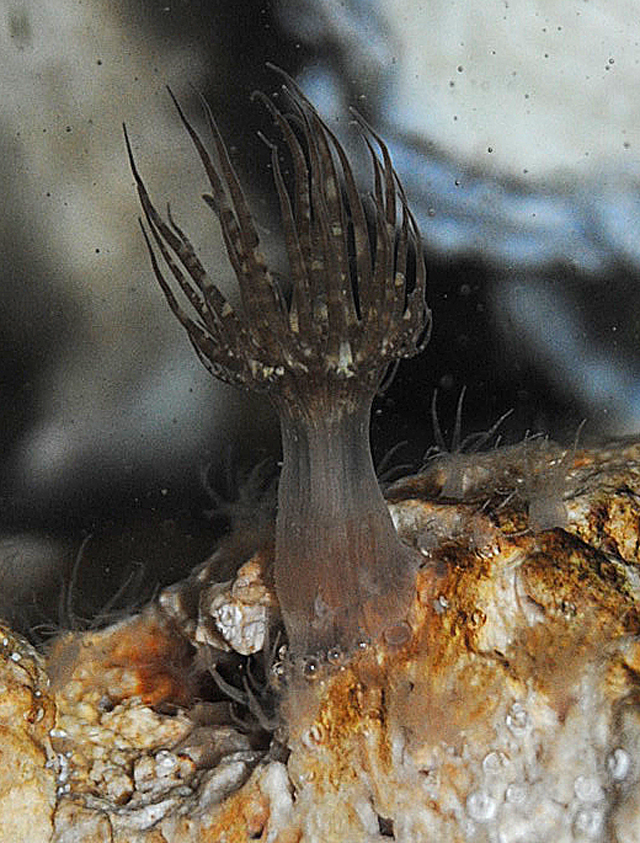
Seen at left is another Aiptasia anemone surround by its daughter polyps. At least two species of Aiptasia are gendered, and reproduce sexually. When conditions are ideal, they will release their gametes (equivalents to eggs and sperm). The gametes fertilize in the water, producing larvae. These are free swimming polyps that will float until finding and attaching to the substrate. Remember, it is not just the "babies" that can detach, swim, and reattach.
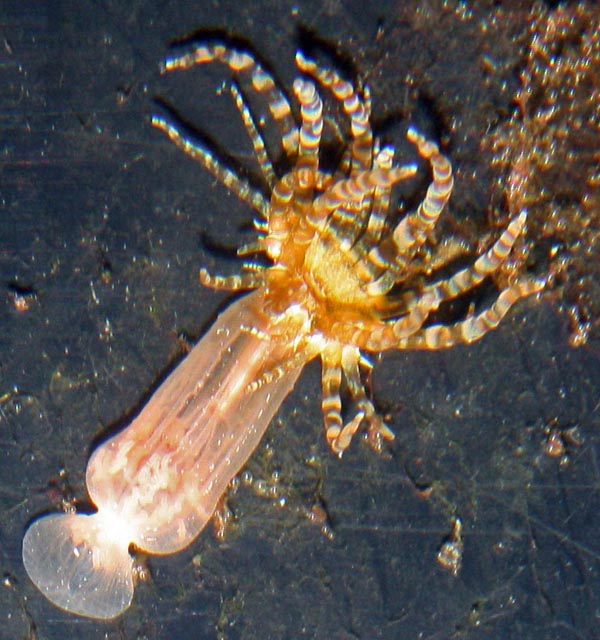
To the right is a swimming Aiptasia. It has detached its pedal disc from the substrate and can now swim freely around the aquarium. The polyp makes a pulsing motion with its body and tentacles. It has been found that it is this species with the golden coloration and curly tentacles that produces "swimmers".
Even after this species of aiptasia has been cut, portions of the polyp still retain their mobility, and can still swim away. If only the oral disc remains, sometimes the tentacles can help them move about the substrate or aquarium, reattach, and grow back with a vengeance.
This is a link to a youtube video of an Aiptasia swimming away from a pending attack by some Berghia nudibranchs.
Like all members of the Cnidaria phylum, Aiptasia have the ability to sting for both offensive and defensive purposes. All Cnidaria have a stinging cells called cnidocytes, each of which contains a stinging mechanism, cnidae or nematocyst. Aiptasia possess both cnidocytes on their tentacles as well as specialized cinclides around the lower part of the column (small blister-like protrusions) through which it expels acontia. Acontia are threadlike defensive organs, composed largely of stinging cnidocytes cells which are expelled out of the mouth and/or the specialized cinclides when the Aiptasia is irritated. Seen below is expelled acontia after we irritated an Aiptasia by cutting it.
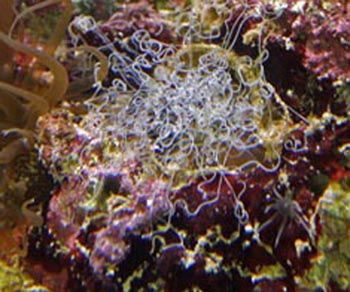
Below, is the same photo with a wider angle.
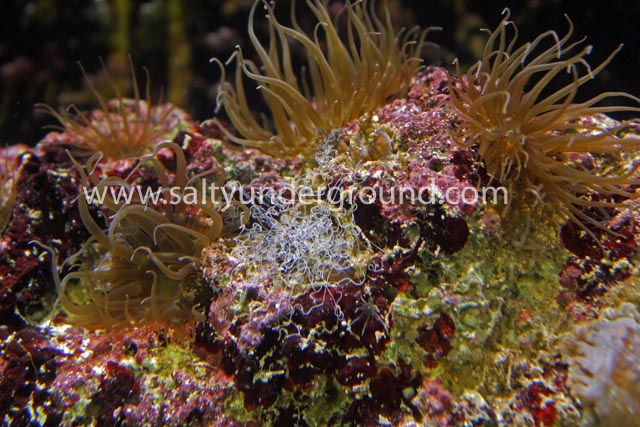
Below are 3 different species of aiptasia anemones The below left photo is of a brown variety of aiptasia anemone that resembles a torch with shorter tentacles. The middle photo is a more translucent golden variety of aiptasia anemone with long tentacles that appear segmented, striped, or curly. The below right photo of the aiptasia anemone has a flatter, wider oral disc, medium-long tentacles and a leathery appearance. These aiptasia anemones can grow to be 3 inches wide. These photos are just a few of the species of aiptasia. One thing that separates the aiptasia anemones for others is the pointy tentacle.
